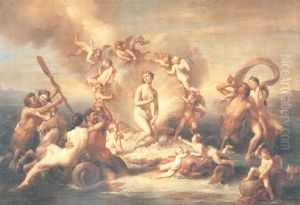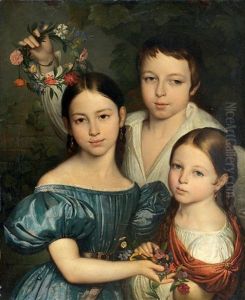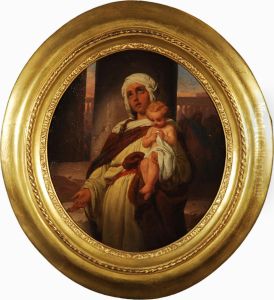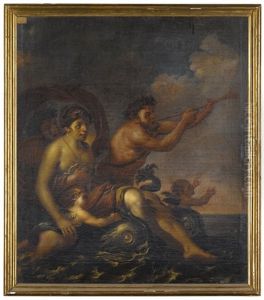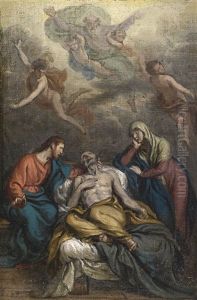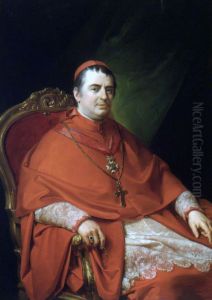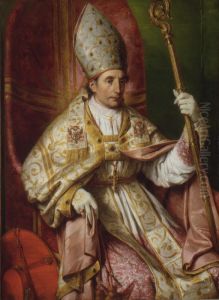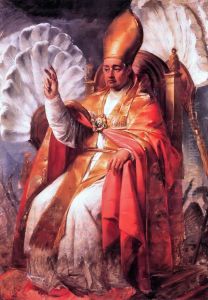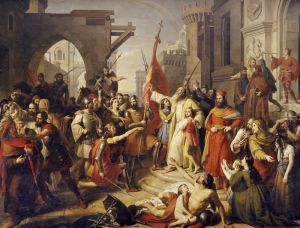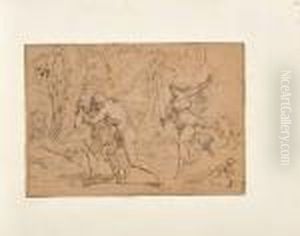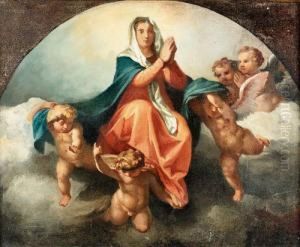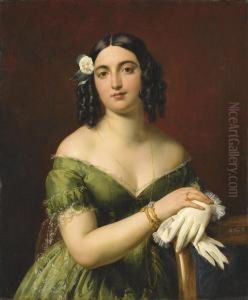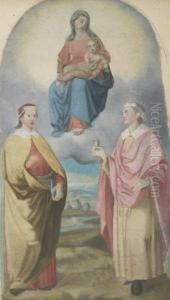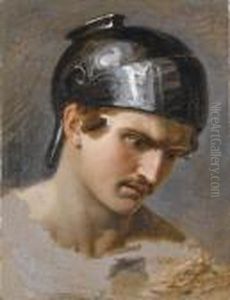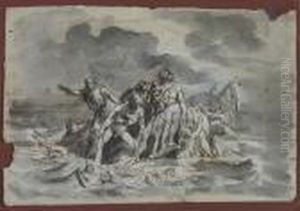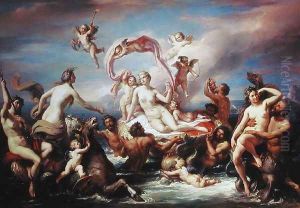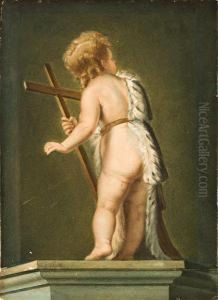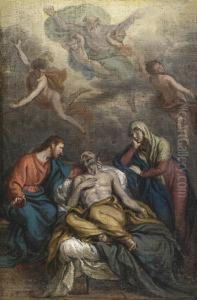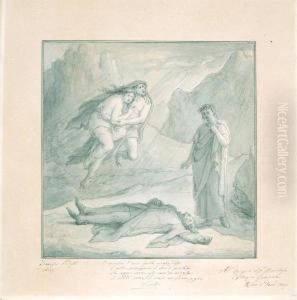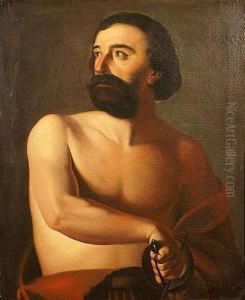Francesco Podesti Paintings
Francesco Podesti was an Italian painter, born in Ancona on February 21, 1800. He is best known for his historical and religious paintings. Podesti showed an early talent for art and was sent to Rome at a young age to study under the guidance of Domenico Corvi. His style was influenced by the Neoclassical movement and by the works of the great Renaissance masters.
During his time in Rome, Podesti became associated with a group of artists who were keen on reviving the grandeur of classical art. He received several commissions for religious and historical works, many of which can still be seen in public buildings and churches in Italy.
Podesti's work was characterized by its dramatic narratives and meticulous attention to detail. His compositions were often large and complex, with a clear focus on storytelling through visual means. One of his most famous works is the fresco 'The Immaculate Conception and the Assumption of the Virgin,' located in the Immacolatella church in Naples.
In addition to religious and historical scenes, Podesti also painted portraits of notable individuals of his time. His works were celebrated for their vivid portrayal of character and their lifelike realism. Podesti's talent earned him recognition and awards, including a knighthood in the Order of Saints Maurice and Lazarus by the King of Sardinia.
As an artist, Podesti was also involved in the restoration of older paintings, including works by Raphael, contributing to the preservation of Italian cultural heritage. He was a respected figure among his contemporaries and played a significant role in the Italian art scene of the 19th century.
Francesco Podesti continued to paint and contribute to the arts until his death on February 10, 1895, in Ancona. His legacy is preserved in the form of his numerous paintings that continue to be admired for their beauty and historical importance. The Gallery of Modern Art in Ancona is named after him and houses many of his works, ensuring that his contribution to Italian art is not forgotten.
